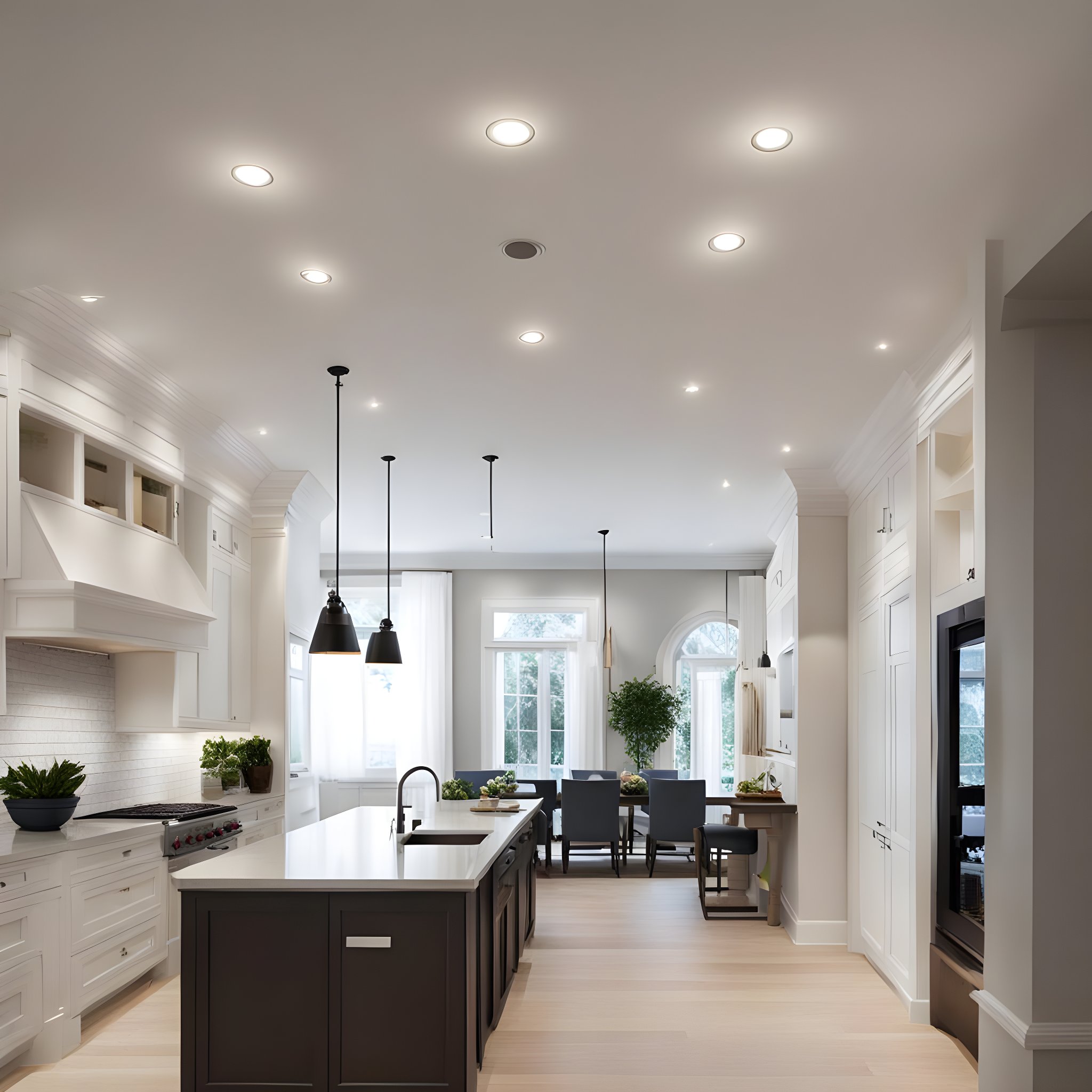Table of Contents
Choosing Recessed Lighting presents itself in various guises, and you may encounter terms like spotlights, cans, or high hats to describe them. Regardless of the nomenclature, the fundamental designs remain consistent.
Instead of hanging down from the ceiling, recessed lighting fixtures are integrated directly into the ceiling itself. This clever integration not only optimizes room space but also imparts an illusion of expansiveness, particularly advantageous for rooms with low ceilings.
Let’s delve into the different types of recessed lighting:
Wall Recessed Lighting: This particular design features an angled flange that allows precise control over the direction of the emitted light. It finds applications both indoors and outdoors, serving to illuminate staircases, hallways, or pathways effectively.
In-Ground Recessed Lighting: Primarily reserved for outdoor use, in-ground recessed lighting serves the purpose of up-lighting landscaping or providing illumination along pathways. Occasionally, you might even spot these fixtures gracing the depths of swimming pools.
Ceiling Recessed Lighting: Here, the emphasis is on creating a recessed light within the ceiling, typically using lower-wattage bulbs. This not only contributes to an enhanced ambient lighting experience but also elevates the overall visual appeal of the space.
In essence, whether you’re seeking to highlight architectural features or simply illuminate a room, the diverse options within the realm of recessed lighting offer both functionality and aesthetic enhancement, all while optimizing the use of space.
What are the advantages of Recessed Lighting?
- Choosing Recessed Lighting, with its fixtures discreetly nestled into the ceiling, creates an illusion of spaciousness in a room by eliminating any hanging elements, effectively maximizing the available space overhead.
- Achieving the coveted “wall washing effect” is within reach with the right choice of trim for your recessed lights. This technique ensures that light is evenly dispersed throughout the room, enhancing the perception of roominess.
- Beyond functionality, recessed lighting also keeps pace with evolving interior design trends, allowing you to infuse your home with style. With a wide array of colors and designs available, these fixtures serve as not just a source of ambient illumination but also as decorative accents tailored to various settings.
How to choose recessed lighting?
When it comes to Choosing Recessed Lighting in the realm of interior design, it’s often the smallest details that add that perfect finishing touch. Recessed lighting, with its unobtrusive presence embedded in the ceiling, serves as a prime example. When seeking the ideal style to breathe life into your space, consider the following factors:
1. Wet or Dry Installation for Recessed Lighting:
Choosing Recessed Lighting involves considering the environment when selecting the appropriate trim for your recessed lights.
- For areas where moisture is a concern, such as showers, pools, or saunas, opt for wet location trims. These are designed to withstand direct exposure to moisture.
- In spaces where humidity levels are high but direct moisture contact is infrequent, like kitchens and bathrooms, damp location trims are the way to go.
- Dry location trims are best suited for areas like living rooms, dining rooms, and bedrooms, where moisture is not a concern.
2. Kitchen:
Choosing Recessed Lighting becomes crucial in the kitchen, where reflectors become your allies. Opt for 4″ or 5″ diameter lamps to ensure ample concentrated light for meal preparation and cleanup.
3. Bathroom:
When Choosing Recessed Lighting for the bathroom, prioritize fixtures that are waterproof and designed for wet or humid environments. These selections are less susceptible to short circuits, especially after prolonged use.
4. Living Room:
In the living room, Choosing Recessed Lighting serves a multitude of purposes. If you aim to showcase artwork, explore wall wash decorating options. For spaces with sloped ceilings, consider lights with sloping trim to harmonize with the room’s unique architectural features.
5. Outdoor:
Choosing Recessed Lighting for outdoor spaces involves selecting fixtures engineered to endure the rigors of the elements, including rain, storms, and extreme temperatures. These outdoor fixtures are available in various sizes and trims, boasting a range of features to cater to your outdoor lighting needs.
In the world of interior design, it’s the meticulous consideration of such details that elevates a space from ordinary to exceptional. By selecting the right recessed lighting style and trim, you not only enhance the functionality of your lighting but also add a touch of sophistication and flair to your living spaces, indoors and out.
Recessed Lighting Calculator
To calculate the placement and spacing for lighting in a room then click here.
To read about more about smart lighting then click here.

